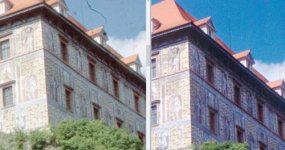When did you last talk to Michael because he has been helping me in his retirement? I would not attempt upgrading the board yourself because the chances of getting it right is slim at best which a high chance that you're going to render your scanner useless.
Michael Bæk answered me 18. juli 2018, I wrote to him 15. juli 2018, the answer was this:
"Sorry we have closed the service"
And that's what Michael told me today:
Sorry I have closed down the business so I won’t be able to modify it is too late sorry
What filters are you referring to? The mirrors or the IR filter that is in front of the bulb?
I mean "mirrors" as filters!
But just do not know they originally designed for a light temperature of 3200-3400K, or they will be able to work fine with 5000K (or 4000K)?
And is there a built-in filter for color negatives (in CQ is the mode of scanning negatives)?
I think to use a 12V LED with a color temperature of 5000K (and I'll try with 4000K) ...
RGB LED or RGBW so far I doubt to use, because. dimming of the channels is done by pulsation - which can badly affect the results of scanning.
I believe that even an increase in the pulsation frequencies will not significantly correct the situation.
I do think a high dynamic LED is worth exploring but you get such amazing results without it that I don't see the benefit. The bulbs are plenty and cheap as well.
For example, scanning color negatives - I noticed that the initial density of the negative is different from the final (I usually scan the MF with a resolution of 4340dpi), probably this is due to the lamp's heating !?
LED will most likely solve the problem with heating the scanner and drum - and especially stabilizes the light source, and the results of the scans will be at a uniform density at the beginning and at the end of the scan!
Scans will be more suitable for stitching!
LED probably will solve the problem with the need to install an IR filter, and perhaps the native color in RAW will need less color correction.
Maybe I'll add a green and blue LED to scan color negatives, I'll dimmize them with current - there will not be a pulse, but not the fact that the latter will work.
Denis



